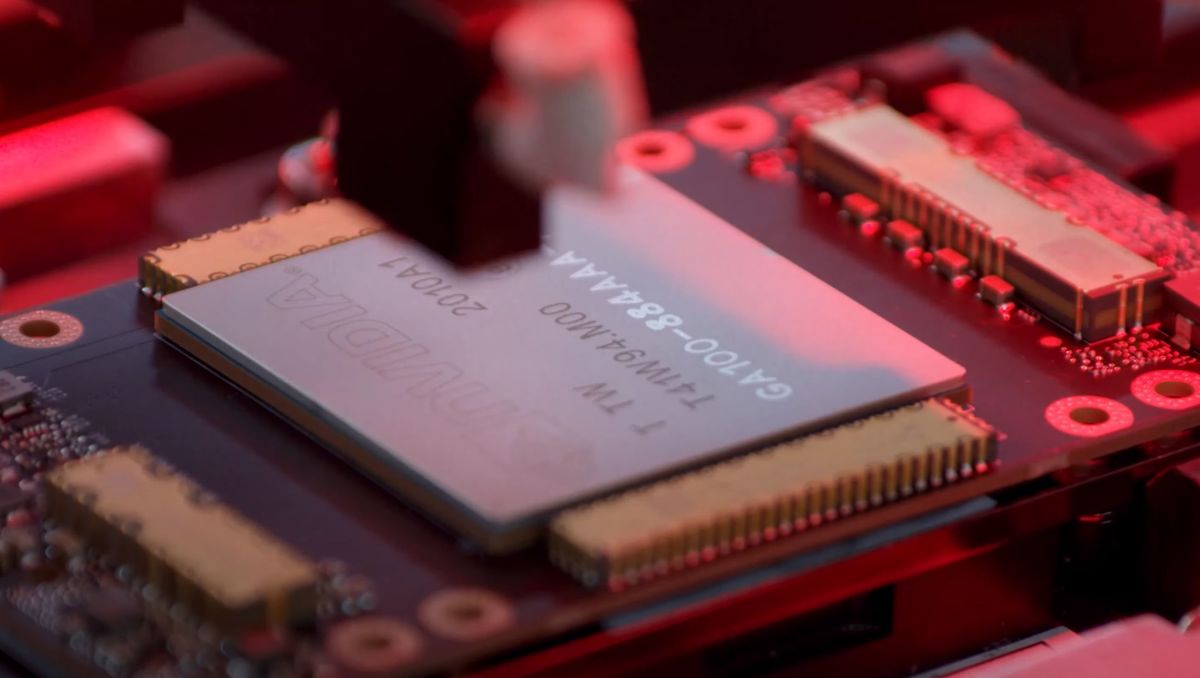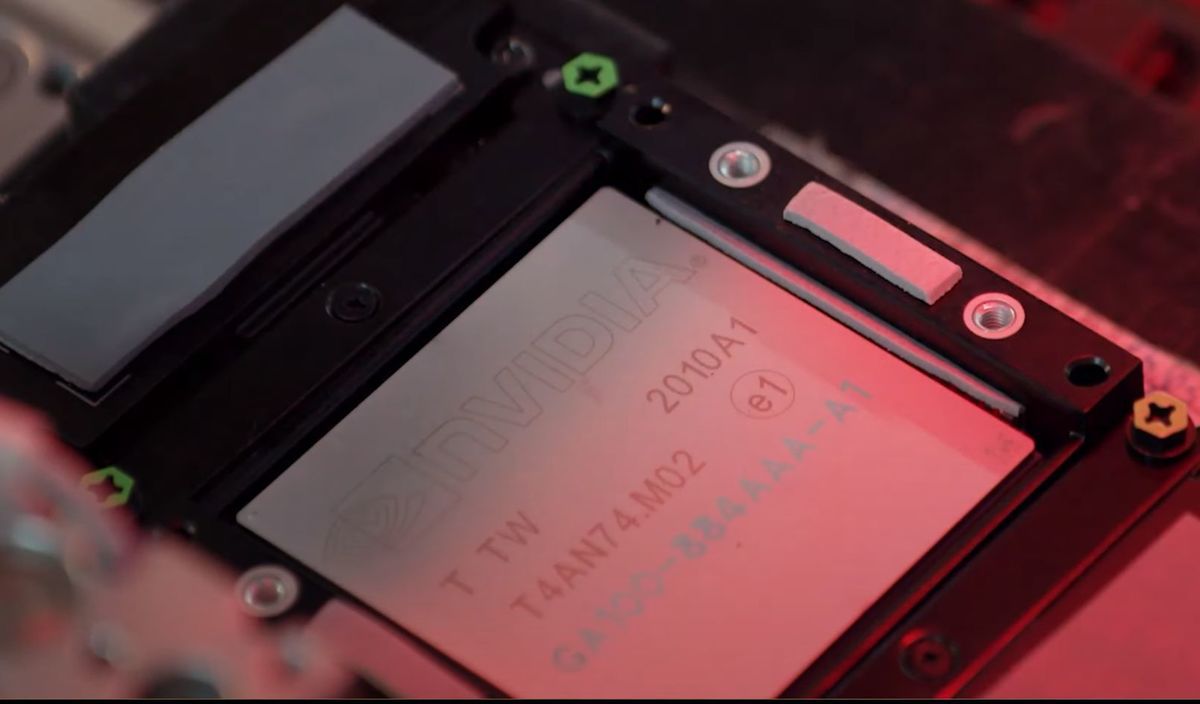Nvidia’s bleeding-edge Ampere GPU architecture revealed: 5 things PC gamers need to know - eldredapocran
Nvidia's next-generation GPU architecture is finally present. Nearly a year and a half after the GeForce RTX 20-series launched with Nvidia's Turing architecture inside, and trinity days after the launch of the data kernel-focused Volta GPUs, CEO Jensen Huang unveiled graphics cards powered by the new Ampere architecture during a member GTC 2020 tonic along Th morning. It looks like an absolute monster.
Ampere debuts in the form of the A100, a humongous data middle-of-the-road GPU powering Nvidia's new DGX-A100 systems. Make nobelium mistake: This 6,912 CUDA core-packing beast targets data scientists, with internal ironware optimized around deep learning tasks. You won't Be using information technology to play Cyberpunk 2077.
Merely that doesn't mean we humbled PC gamers prat't glean information from Ampere's AI-centric impart. Here are basketball team key things that Nvidia's International ampere architecture mean for the next-gen GeForce lineup.
1. Ampere ISN't for you yet, but it will be
If you're looking limited inside information close to GeForce artwork cards, good, keep waiting. Like the Volta and Pascal GPU architectures before it, Ampere's grand impart took configuration in the form of a mammoth GPU built to accelerate data center tasks. Unlike Conte Alessandro Volta, withal, Ampere will indeed be coming to consumer graphics card game too.
In a prebriefing with business reporters, Huang aforementioned that Ampere testament streamline the Nvidia GPU lineup, replacement some the data center-centric Volta GPUs as well as the Turing-based GeForce RTX 20-series. The hardware inside apiece specific GPU will be tailored to the market it's targeting, though. "There's great overlap in the architecture, but not in the configuration," Marketwatch reports Huang as saying when asked about how the consumer and workstation GPUs will compare.
2. International ampere jumps to 7nm
As widely potential, Nvidia's Amp GPUs are shapely using the 7nm manufacturing sue, moving forward from the 12nm process utilized for Alan Mathison Turin and Volta. It's a big deal.
 Nvidia
Nvidia The Ampere GPU at the heart of the A100 is called GA100, a teaser picture released by Nvidia shows.
Smaller transistors mean better performance and power efficiency. The "Navi"-founded Radeon RX 5000-series graphics cards beat Nvidia to 7nm, and the transition helped AMD's offerings greatly increase their efficiency. While Radeon card game have turn tail hot and power-hungry for geezerhood prior, the 7nm Navi cards Drew even with their GeForce counterparts in both performance and efficiency—atomic number 102 small effort. Look back to Team Green's own past, Nvidia's transition from the GeForce GTX 900-series' 28nm process to the GTX 10-series' 16nm process resulted in huge performance gains.
In other words, history says we should expect wonderful advancements from Ampere-based GeForce GPUs.
3. A squeezes in a lot more cores
The move to smaller transistors also substance you can squeeze more cores into the same space. Whereas the Volta flagship, the Tesla V100, deployed 21.1 billion transistors, 5,120 CUDA cores, and 80 streaming multiprocessor clusters into its 815 millimeter^2 die, the revolutionary Ampere-based A100 crams 54 billion transistors, 6,912 CUDA cores, and 108 SMs into its 826 mm^2 die.
That's a spacious bounce forward, and more GPU means faster artwork cards. For reference, the GeForce RTX 2080 Ti has 4,352 CUDA cores in its 754 millimeter^2 die. Its heir might be downright bristling with cores.
4. Ampere's AI brains got smarter
Volta and Turing introduced tensor cores to Nvidia's GPUs. Tensor cores accelerate machine scholarship tasks, and in GeForce GPUs, they superpowe the awesome Trench Learning Super Sampling (DLSS) 2.0 engineering science and "denoise" the grainy artifacts generated by real-time ray tracing's light casting.
The A100 GPU utilizes third-gen tensor cores that greatly improve performance on 16-second "FP16" half-precision floating point tasks, attention deficit disorder "TF32 for AI" capabilities for single-precision tasks, and now support FP64 double-precision tasks A well. It clay to be seen how (and potentially plane if) the third-gen tensor cores get deployed in Ampere-based consumer GPUs, but with Nvidia pushing DLSS and machine learnedness so aggressively, IT seems care a lock that next-gen GeForce GPUs bequeath own leveled-up AI in some way, specially if rumors about greatly enhanced ray-trace performance prove true. Many rays means more than noise, and more noise means better denoising is needful.
5. Ampere supports PCIe 4.0
Nvidia didn't announce this for its DGX-A100 organisation, but Supermicro also revealed new systems powered by the International ampere A100 GPU, and that proclamation confirms that the side by side-gen hardware supports the cutting-edge PCIe 4.0 user interface. AMD's Ryzen 3000-serial processors were the first to embrace the new interface, which delivers a big speed advance over the PCIe 3.0 slots found in computers for several years running.
 Nvidia
Nvidia A DGX-A100 Ampere arrangement, fresh out of Nvidia CEO Johannes Vilhelm Jensen Huang's oven.
When information technology comes to graphics cards, the move may appear within reason academic. Navi-settled AMD Radeon 5700 nontextual matter card game that support PCIe 4.0 aren't any quicker than they are in PCIe 3.0 systems, as our PCIe 4.0 fuse explains, and broadly, most graphics cards don't come close to saturating the PCIe 3.0 interface yet.
That almost trend matters, though. TechPowerUp's testing shows that the fearsome $1,200 GeForce RTX 2080 Ti indeed gets a midget, but measurable public presentation boost when running from a PCIe 3.0 x16 slot sort o than a PCI 3.0 x8 one-armed bandit, indicating that it's approaching the upper boundaries of PCIe 3.0's capabilities in multi-GPU gaming rigs. Running several GPUs in a mainstream, non-HEDT system splits one PCIe 3.0 x16 connection across the two slots.
If the Ampere-based RTX 2080 Ti replacement so packs many more CUDA cores and a lot more artwork desirableness, IT could drown PCIe 3.0 x8 connections. Deploying PCIe 4.0 skirts that roadbump. It also introduces a novel twist for system builders. Intel's latest 10th-gen Core CPUs opted to stay on PCIe 3.0 rather than upgrading to PCIe 4.0. While Intel CPUs generally run slimly faster than their AMD Ryzen counterparts in games, if you plan connected building a burn down-breathing, no-holds-barred system of rules with several high-cease Amp GeForce GPUs inside, opting for Ryzen and its PCIe 4.0 support could be the better move. Interesting!
[ Boost reading material: The best CPUs for gaming.]
What we still want to understand
 Nvidia
Nvidia Ampere is hither, and soon it'll be powering close-gen GeForce artwork card game.
Nvidia's limited A100 announcement failing to reveal some specifications of significant stake to gamers, just about notably A's clock speeds and ray tracing performance. Faster clock speeds normal faster gaming performance, more often than not. More dedicated RT cores could greatly enhance the ray tracing capabilities of side by side-gen GeForce GPUs, meanwhile, reducing the steep functioning penalty currently inflicted when you activate the gorgeous lighting effects in games—especially if paired with Nvidia's new advanced tensor cores.
The GTC 2020 keynote and Nvidia's related to documentation didn't restor either aspect, alas. Recent leaks and rumors evoke that GeForce Ampere GPUs wish clock even higher than the quick RTX 20-series, however, and deliver upbound to a 4x performance increase in ray tracing speeds. The source doesn't have an established track record for accurate leaks, however, and you should ever assume rumors with a big pinch of salty. That same, all the extra blank space provided by the derail to 7nm gives Nvidia a parcel out of elbow room to pack in more CUDA cores, more RT cores, or (hopefully) a mixture of some.
Technical types can find Nvidia's deep-dive into the Ampere architecture here.
Bottom bank line: Nvidia's next-gen Ampere GPU computer architecture is finally here, and eventide in data center take shape, there's a lot for PC gamers to arrest excited astir. Instantly the time lag for Ampere-based GeForce graphics cards begins. Nvidia hasn't uttered a cheep astir them, merely expect to hear the new hardware later this year. With "Big Navi" Radeon GPUs and eye-popping next-gen consoles bringing bigger performance and ray tracing to AMD ironware in the coming months, Nvidia's sure to want to drop a malleus on its rival's ambitions.
Source: https://www.pcworld.com/article/399172/nvidia-ampere-gpu-architecture-reveal-geforce-pc-gamers.html
Posted by: eldredapocran.blogspot.com


0 Response to "Nvidia’s bleeding-edge Ampere GPU architecture revealed: 5 things PC gamers need to know - eldredapocran"
Post a Comment